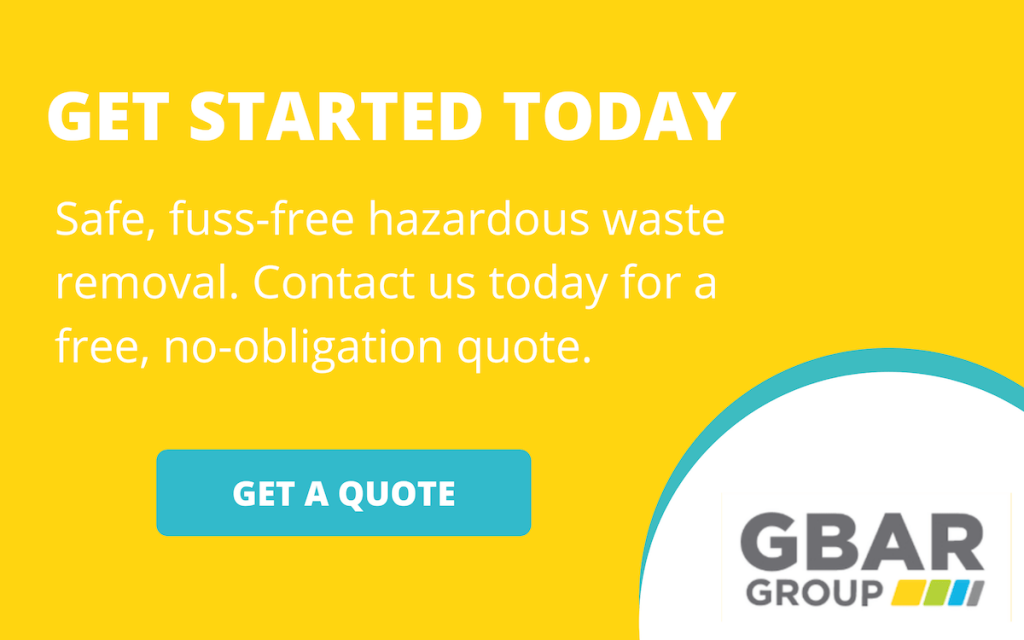
Everything you need to know about hiring a mould removal professional.
Mould removal plays an important role in keeping your property and home safe. DIY mould removal can be particularly daunting, as depending on the type of fungus, mould exposure can be toxic. To prevent mould from coming back, comprehensive mould removal and remediation requires a step by step process that is safely carried out by a professional. Here’s what you need to know before hiring a mould removal specialist:

What Is Mould Remediation?
Mould is a familiar and common condition found in many homes. Feeding directly from high levels of moisture, mould bacteria can start to grow when an area is humid, warm, and lacking adequate ventilation.
Mould remediation helps homeowners and residents stay safe with the identification of large-scale mould problems and eradicating or encapsulating the bacteria. Considering mould is particularly common in older houses, mould remediation has become an integral step in the buying and selling of properties. Mould remediation is a process that not only physically removes the mould bacteria but also cleans the area and prevents the mould from growing back.
Despite what you might find on Facebook forums, mould remediation requires a much more comprehensive approach than just pouring some bleach onto the affected area. The step by step process of mould remediation includes a chemical spray, disinfection, encapsulation of spores, and a tailored approach to addressing the cause of the mould growth.
What Do Mould Removal Companies Do?
Mould removalists are licensed and skilled tradesmen – no different from an electrician or plumber in the sense that they are professionally and specifically trained for mould removal and remediation.
Mould removal companies have become increasingly prevalent over the last few years because more homes are facing mould growth on a large-scale. Mould is not a newly introduced bacterium to indoor areas; it’s just that more homes are facing mould problems than ever before.
One of the main reasons mould removal has become so common is because more houses are implementing energy-efficient practices to seal in their home, which decreases ventilation. High levels of humidity with little ventilation for prolonged periods creates a breeding ground for mould bacteria spores.
Mould abatement companies rely on proven methods to kill mould bacteria, physically remove spores, and prevent the mould from growing back again. This requires a step by step process, which can take anywhere from 1 to 5 days depending on the scope of the mould project.
Mould Testing and Removal
Mould testing is a term that is often thrown around without homeowners really understanding when it is necessary. Mould testing before removal is a common sampling method for measuring airborne contamination. An air sample will be taken, sent to an accredited laboratory, and the presence of mould confirmed.
In most cases, mould can be positively identified visually. If you can already see mould, you typically do not need to spend more money testing for it. The reality is, it will just need to be removed. While there are different types of mould to test, a healthy home will be entirely mould-free, regardless of the type.
The only time mould testing should be used pre-removal is when you need further proof that your house is suffering from a mould problem. If you cannot see mould but are experiencing strong mildew smells, you should have the air sampled. It’s also a good idea to consider mould testing if you’re buying an older house or apartment – mould presence can be a contributing factor to decreased house value.
Do I Really Need Mould Remediation?
Yes. While most forms of mould are pretty harmless, a healthy home will not contain any mould bacteria. Living with mould bacteria is not safe, as many moulds have the potential to cause respiratory problems for those exposed.

Mould remediation will include comprehensive assessments, physical removal of the mould, chemical treatment of the area, and encapsulation. Despite what many people think, living and being exposed to mould is not safe for health. Mould remediation services offer comprehensive safety of you, your family, and your property.
While there are plenty of DIY tactics for mould removal online, using bleach on large-scale mould areas will not solve the problem. DIY mould removal will not address the mould issue itself. When you attempt to deal with large-scale mould, not only do you run the risk of dangerous exposure, but it does not prevent mould from growing back. Professional mould remediation will provide identification and remediation of all mould areas, while also addressing the original cause of the mould growth.
Mould Remediation Process
A mould remediation specialist team will implement a comprehensive step by step process to ensure all mould is entirely eradicated from the home.

1. Safety
Mould removal requires appropriate and adequate safety to those handling hazardous materials. This includes a high-quality filtration mask, neoprene gloves, and a full protective suit for the harsh chemicals used for larger mould remediation projects.
The affected area will be entirely sealed off from the property with plastic sheeting. Sealing off the areas contaminated with mould physically prevents mould spores from becoming dispersed throughout the home.
2. Equipment
Mould specialists will use expensive, professional tools and equipment such as HEPA (High-Efficiency Particulate Air) scrubbers, HEPA vacuums, heavy-duty humidifiers and encapsulation resources to properly remove and remediate mould areas.
3. Air Cleaning
Once the mould has been physically removed, the air will be cleaned of any airborne mould spores in the environment. Mould removal specialists will use HEPA air scrubbers and air ventilation exchange to replace dirty mould air with clean air in the affected areas.
4. Filtration
Mould remediation will commence with the use of filters that have been designed to capture tiny mould spore particles. Regular filters do not work during this step as mould spores are minuscule and need specifically shaped filters.
5. Material Removal
Depending on the scope of the mould, the specialist may discard mouldy porous building materials such as drywall, insulation, and baseboards. These types of materials are generally too difficult to restore to their previous uncontaminated condition.
6. Chemical Clean
Mould removal companies will remediate the affected area by using antimicrobial chemicals to clean any remaining mould bacteria or stains after demolition and removal.
7. Encapsulation
A professional mould removal team will seal a sealer or encapsulant to make the treated areas more resistant to moisture damage and bacteria, which can also help with odour control. Sealing the affected area prevents the re-growth and spreading of any mould spores.
8. Fixing the Source
The technicians will also take the time during the removal and remediation process to address any moisture or humidity concerns. Identifying and addressing the cause of mould bacteria is one the most important steps in ensuring the mould won’t come back.
Mould Removal Costs
It’s difficult to put a number on mould removal costs as they can vary greatly. The price of mould remediation will depend on both the size and nature of the project.
While some professionals will try to exaggerate the amount of work that needs to be done to drive up the price, some companies will offer quotes at shockingly low prices. This is a huge red flag – companies charging very little are not going to execute the job well.
The best course of action to get an accurate quote on your mould removal and remediation project costs is to collect several quotes from different businesses and find the company that fits the bill perfectly. A reputable mould removal company will be honest, transparent, and work to find a mould removal solution to suit your property’s needs.
What to Expect From Mould Removal Services
A mould removal company should be trusted, reputable, and committed to providing safety for your home. Mould remediation is an important industry that ensures properties are kept safe from toxic living conditions. However, not all mould removal companies are created equal. Many mould remediation companies take advantage of homeowners by creating an air of panic around mould remediation.
The mould removal company should be able to explain your mould removal requirements in layman’s terms. If the technician is unable to break down your mould removal project for you, then be wary. There are many handymen or mould removal companies that will attempt to use technical language or confusing terms to insinuate that the project will need more work than what is true.
The important thing is to take the time to find a mould removal specialist you can trust. You can expect your mould specialist to take the time to identify the cause of the mould, find a solution, remove the mould, and remediate the area to prevent it coming back – all while ensuring your property is kept safe.
Hiring a Mould Removal Specialist
If your property is suffering from mould problems, hire a mould removal specialist that you can trust. Find a removalist that is experienced, professional, qualified, and committed to safety.
Here at GBAR Group, we provide mould removal and remediation services to properties of all shapes and sizes. With over 30 years in the industry, we boast an expansive and experienced team of qualified mould technicians that are committed to helping others increase the safety of their properties with mould and microbial remediation.
When you work with GBAR Group, you can rest assured you are receiving the best mould removal services at competitive prices. Our team of mould professional services address the water-related problems at the source – we make sure every job is completed to the highest standard to ensure mould is not an ongoing issue on the property. We will assess the extent of damage or contamination on your site and assist you in quantifying the risk and potential health effects of microbial. All of our team members are happy to sit down and advise you on the best course of action to prevent mould from spreading on your property.
We have the knowledge, the experience, the training and the technology to provide professional remediation services. If you’d like to learn more, get in touch for an assessment and on-site quote.






